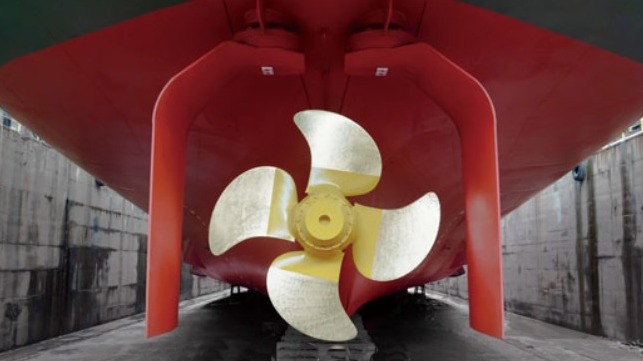Trials Proceeding on Revolutionary Gate Rudder Design

A group of researchers is proceeding with trials for a revolutionary rudder design know as a gate rudder. In the next round of testing, the researchers are preparing to retro-fit the propeller to a coastal cargo ship seeking to confirm data that suggests the design is more efficient in propulsion and steering resulting in lower fuel consumption and improved environmental performance.
Known as the gate ruder, the initial design was developed and patented in Japan and tested on a 2,400 gross ton container ship in November 2017. Wartsila at the beginning of 2020 licensed the technology for development and global marketing while a group of researchers and 17 partners working in Glasgow, Scotland at the University of Strathclyde received a €6 million ($7.2 million) EU grant under the Horizon 2020 Research and Innovation Framework Program to retrofit the rudder system to a commercial ship further demonstrating the fuel savings and improved maneuverability produced for vessels.
Unlike a traditional rudder which sits behind a ship’s propellers to steer the vessel, the gate rudder is “U” shaped and sits astride the propeller. The design produces a “duct effect” acting as a nozzle to generate additional thrust. The two arms of the rudder can be independently controlled to provide better steering while underway as well as helping vessels to move sideways for example when docking.
“As a propulsor-based solution, the gate rudder offers a significant amount of power-saving that cannot be achieved by any other single energy-saving device which is currently available in the market,” says Professor Mehmet Atlar, who is the project coordinator from the Department of Naval Architecture and Marine Engineering (NAOME) at Strathclyde. “An important advantage of the gate rudder system is highly-effective maneuverability within coastal and port areas as well as navigating more efficiently in waves during oceangoing operations.”
The research team, which includes the patent holder, Dr. Noriyuki Sasaki who is a Visiting Professor in NAOME at Strathclyde, believes that the gate rudder system is simple, generic, and flexible. They report that it can be installed on new-built ships or retrofitted to existing ships, as well as integrated easily with other fuel-saving and emission reduction technologies.
"GATERS demonstrates significantly reduced emissions from ships particularly within coastal and port areas, challenging and even exceeding the current and future legislative requirements of the International Marine Organisation and local regulations for emissions,” says Professor Atlar.
The first full-scale sea trials were conducted in Japan by Kamome Propeller with support from The Nippon Foundation. The tests were run with a 360-foot container ship fitted with the gate rudder, while a sister ship operated alongside with a conventional rudder. These tests confirmed the superior performance producing a significant energy saving as well as favorable performance in maneuverability and quieter operations with a reduced wake.
Research data shows the potential for a fuel-saving of 15 percent in calm waters, while it could be as high as 30 percent in rough seas. The gate rudder is also quieter than a traditional rudder system, reduces hull wake, and can help to protect the propeller from damage which would be particularly beneficial in sensitive environments such as the Arctic.
The GATERS project at the University of Strathclyde seeks to advance the concept. The researchers will use data gathered from the sea trials to demonstrate whether the system can be applied to an existing 295-foot coastal cargo ship as a retrofit. They are also exploring applications for other oceangoing vessel types and sizes.
